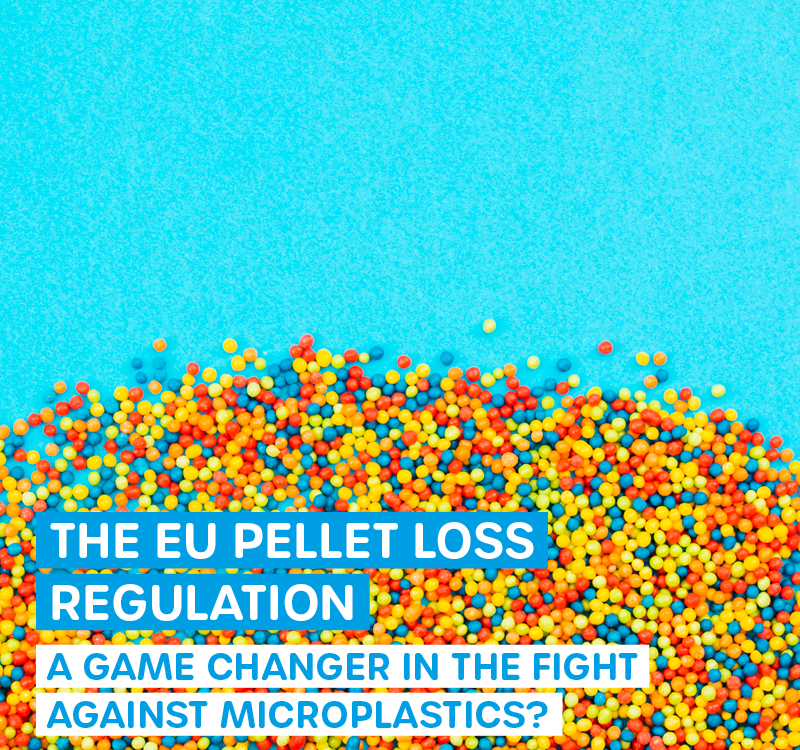
Istria300 with Trikoterie
28. August 2025
Microplastics from Shoe Soles
5. September 2025The Microplastic Footprint: From Measurement to Certification – A New Standard for Sustainable Production
The Invisible Crisis
Microplastics have long since reached the most remote corners of our planet – from Arctic ice to the deep sea, from the food chain to human blood and tissue. While the CO2 footprint is already established as a standard for climate protection, a method for comparable assessment of microplastics has been missing – until now. We are closing this gap with the scientific definition of the Microplastic Footprint together with revolutionary detection methods.
The Microplastic Footprint: Definition and Significance
The Microplastic Footprint is the amount of primary and virtual microplastics that a product introduces into the environment. This includes all steps of the product lifecycle and all product components ("beyond LCA" process analysis). The Microplastic Footprint of a product therefore encompasses microplastic inputs into the environment from production, processing, packaging, transport, use, and disposal.
Virtual microplastics are often overlooked. They arise through the use of synthetic polymers in the manufacture and processing of products. This is independent of whether the final product contains plastics or not. This invisible component makes the Microplastic Footprint particularly complex and meaningful.
Learning from the CO2 Footprint: What Does a Microplastic Assessment Need?
The success of the CO2 footprint is based on several established pillars:
- Standardized norms and methods
- Reliable measurement and detection procedures
- Independent certification processes
DIN ISO 14064-1 provides specifications along with guidance for the quantitative determination and reporting of greenhouse gas emissions and greenhouse gas removals at the organizational level, while ISO 14067 establishes requirements and guidelines for quantifying the Carbon Footprint of products.
For the Microplastic Footprint, such international standards are still missing. Comparable norms are urgently needed that:
- Establish uniform definitions for all microplastic categories
- Establish standardized measurement procedures and assessment methods
- Define clear system boundaries and accounting rules
- Determine quality requirements for data collection and validation
Fluorescent Microscopy: Breakthrough in Microplastic Detection
The fluorescence marker abcr eco Wasser 3.0 detect mix MP-1 (AB930015) was used. This marker could be developed through years of research to selectively stain microplastics. The advantages of this method are impressive:
- Speed and efficiency
- Selective detection
- Cost efficiency
Data Richness Through Automated Analysis
Fluorescence microscopy offers a decisive advantage: massive data generation. A much faster and more reliable approach is the use of automated imaging tools. These can be simple fluorescence cameras or fully automated fluorescence microscopes that can take fluorescent images of the entire sample.
This high data density enables:
- Statistical robustness of measurements
- Automated particle counting and classification
- Reproducible and comparable results
- Scaling to industrial applications
Certification Process for the Microplastic Footprint
Based on insights from CO2 certification, a Microplastic Footprint certification process should have the following structure:
Stage 1: Method Validation
- System delineation: Definition of accounting boundaries analogous to Scope 1-3 in CO2 footprint
- Data collection: Standardized sampling and preparation
- Measurement procedures: Application of validated detection methods (preferably Wasser 3.0 detect)
Stage 2: Data Verification
- Plausibility check: Review of data quality and completeness
- Reproducibility tests: Repeat measurements to ensure measurement accuracy
- Comparability check: Comparison with reference values and industry benchmarks
Stage 3: Independent Certification
- External auditing: Review by accredited certification bodies
- Documentation validation: Review of reporting and transparency •
- Continuous monitoring: Regular re-certification and monitoring
Qualification and Quantification of Microplastic Flows
Qualification – the "What":
- Polymer type identification (PE, PP, PS, PET, etc.)
- Size class determination (>1mm, 1mm-100μm, <100μm)
- Morphology analysis (fragments, fibers, films, beads)
- Additive and pollutant detection
Quantification – the "How Much":
- Particle count per volume unit
- Mass concentrations
- Surface loading
- Load calculations over time periods
The specialty for fast, reliable, and cost-effective microplastic detection lies in the fluorescence markers developed and patented by Wasser 3.0, which have been tested and validated in numerous research and scaling projects on various water types, including extensive analytics on municipal wastewater treatment plant effluents (>700 samples, as of April 2025) and over 500 sampling points in surface water monitoring.
Transparency as a Driver for Change
With the Microplastic Footprint, we close the gaps between industries and society and create transparency and a lever for self-commitment by the main contributors.
Analogous to the CO2 footprint, the Microplastic Footprint will:
- Strengthen consumer awareness and promote sustainable purchasing decisions
- Motivate companies to optimize their processes
- Support investors in evaluating ESG criteria
Creating Economic Incentives
Certified microplastic-reduced products can:
- Open market access to sustainability-oriented segments
- Reduce compliance costs through proactive measures
- Strengthen brand image and customer loyalty
- Improve risk management in the supply chain
Regulatory Perspectives
The overarching measures of identifying and reducing all sources of microplastics are widely discussed. Not only restriction to pellets, textiles, and tires, but initiation of strict binding EU measures to prevent microplastics at the source.
A standardized Microplastic Footprint would:
- Simplify regulatory compliance
- Efficiently fulfill monitoring obligations
- Cost-effectively implement preventive measures
- Advance international harmonization
Conclusion: The Future of Microplastic Assessment
By preventing the entry of microplastics and other micropollutants into our water and our environment, we provide the greatest possible lever when it comes to consistent water-relevant climate and environmental protection.
With our definition of the Microplastic Footprint and revolutionary detection with abcr eco Wasser 3.0 detect MP-1, the scientific and technological foundations for a new era of environmental assessment are being created. Fluorescent microscopy makes it possible for the first time to quantify microplastics quickly, cost-effectively, and with high data density.
Success will depend on whether it is possible to transfer the insights from the CO2 footprint development: clear standards, independent certification, and social acceptance. The time is ripe for the Microplastic Footprint as a new standard for sustainable production. Companies that invest today will be tomorrow's pioneers of a microplastic-free future.






